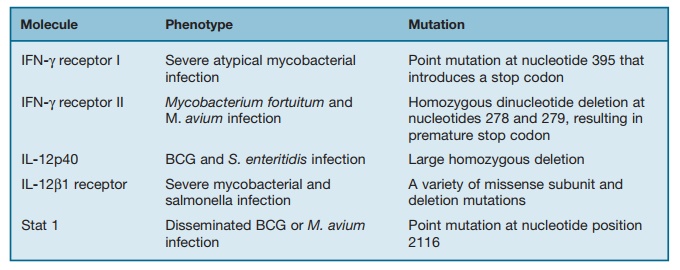Chapter: Essential Clinical Immunology: Immunological Aspects of Chest Diseases: The Case of Tuberculosis
Immunological Aspects of Chest Diseases: The Case of Tuberculosis
Immunological Aspects of Chest Diseases: The Case of
Tuberculosis
INTRODUCTION
The respiratory tract is one of the first portals
of entry for many viral and bacterial microorganisms. The local defense
systems are generally sufficient to handle most invading microorganisms in
healthy individuals but if the lung is damaged by bronchiectasis or fibrosis,
the infecting microorganisms are able to establish an infection, cross the
epithelial layer, and cause invasive disease.
The respiratory tract has two main com-partments.
The first is the airways, which extend from the nose to the terminal
bron-chioli. The second area is the alveoli in the lung tissue. The airways’
defenses include many features such as ciliary movement, mucus, antimicrobial
proteins, and rapid arrival of neutrophils whose combined action make it
difficult for organisms to establish an infection. The access to the alve-oli
is also generally limited to very small inhaled particles. In the alveoli,
invading microorganisms encounter resident alveo-lar macrophages that play a
major role in engulfing and killing invaders.
The lung has its own immune system, which is known
as bronchus-associated lymphoid tissue. Antigen-specific immune responses are
generated at these sites, which, similarly to the Peyer’s patches in the
intestine, contain dendritic cells (DCs), which are the main antigen-presenting
cells, as well as T and B cells, the latter
organized into B-cell follicles, as well as
macrophages. Immune responses occur in response to infections or injury to the
tract. The main antibodies found in respiratory tract secretions are IgA and
IgG. However, B cells producing IgE and IgG are also found in the lung. Why IgE
is present in this tissue is unclear but IgE may have a role in controlling
parasites that reach the lung as it does in the intestines. IgE plays a major
role in hypersensitivity reactions that occur in the respiratory tract, such as
asthma and hay fever.
There are a variety of respiratory dis-eases
including infectious diseases, inter-stitial lung disease, and allergic
diseases. However, we will concentrate on tubercu-losis (TB), one of the most
important global granulomatous diseases in the world today.
TB is arguably the single most success-ful pathogen
humankind has ever known. The unparalleled penetrance of TB in the human
population reflects the extraordi-nary ability of Mycobacterium tuberculosis to cause a lifelong persistent
infection, a peculiarity that is likely the result of a long dynamic
interaction with its host. Although microbial infections, including those
caused by highly pathogenic bac-teria, tend to run an acute course, with
infectious cycles of a few weeks, mycobac-terial infections such as leprosy and
TB are unusually protracted due to these patho-gens’ proclivity to persist in
their hosts.
Table 13.1 Genetic
Immunodeficiency Syndromes that Predispose to Mycobacterial Infection

Persistence by M.
tuberculosis can occur in the form of chronic active disease or latent
infection; in either form, the biology of M.
tuberculosis’ persistence is poorly understood. Because available
antibiotics are inefficient in eradicating persistent bacteria, treatment must
be extended, and often lasts between six and nine months. Despite the inherent
difficulties in implementing these sorts of regimens, antibiot-ics have
effectively reduced TB in most of the industrialized world. However, they have
had less impact in the rest of the world, where lack of resources make
implementing such cumbersome drug treatments considerably more difficult. Most
people live in the developing world, and it is there – where poverty is
extreme, public health deplorable, and malnutrition and overpopulation
widespread – where TB relentlessly and inexorably continues to exact its deadly
toll. Although it is clear that combating the current TB epidemic would be
greatly facilitated by the devel-opment of new and more efficient drugs and
vaccines, the major obstacle in deal-ing with TB and other major infectious
diseases such as malaria and HIV is the uwillingness of the industrialized
world to make the investments needed to facilitate the efficient distribution
of already avail-able drugs, as well as the discovery of new ones.
Related Topics